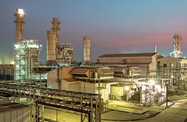In subtropical South-east Asian climates, where air conditioning accounts for about 50% of a building’s energy use and up to 30% of operating costs, energy efficiency requires keeping cold air inside and hot air out. Some sector participants estimate that improvements to the “building envelope” – insulation materials to prevent cold air from escaping, glazed windows to reduce heat entry, efficient chillers and a temperature control system – can reduce the energy required to cool a building by 50-80%.
But not all green buildings or construction materials are created equal. Some technologies may see fiercer competition than others. Demand in South-east Asia is greatest for materials related to energy efficiency and retrofitting. These include insulation, heat-resistant window glazes, super-efficient cooling systems, as well as light-emitting diode (LED) lights
Meanwhile, more advanced green building technologies, like rooftop solar panels and sophisticated adaptive management technologies, remain largely restricted to pilot projects. For green building firms, the capacity of financiers and certifiers to value efficiency gains and discern quality will continue to shape market opportunities.
The selection of these materials depends on integrated modelling, a key technical leap that allows architects in the earliest design stages to estimate the final building’s energy, water and waste consumption. Computer modelling is essential in the choice between various materials, which occurs very early in the design process according to analysts within the sector.
MEASURING QUALITY: However, the wide array of available technologies in some areas can overwhelm project developers, who need ways of discerning the good, high-quality and cost-effective materials from the bad so that they can accurately model building energy use. Simulations that inaccurately assess the efficacy of green building materials risk miscalculating a building’s overall energy savings.
As a result, measuring quality requires new technical capabilities. “The market is growing in the expertise around energy service companies, not necessarily in building materials or technologies that are pretty much available,” said Christopher Seeley, who manages the Clinton Climate Initiative (CCI), Asia’s building retrofit programme.
According to Seeley, identifying the most efficient and highest-quality green technologies available in South-east Asia remains a key challenge. In addition to connecting project developers with materials suppliers and financiers, CCI helps developers assess product quality amidst “an abundance of new technologies” that, according to Seeley, have flooded the South-east Asian market.
For example, LED bulbs vary in light quality, measured by the colour rendering index (CRI), and longevity. Although most companies offer a 35,000-hour warranty, some companies may provide an immediate replacement in the event of failure while others may require a lengthy review process. “Building owners have LED suppliers knocking on their door every day of the week,” Seeley said, but “the average general manager of a hotel has no time to sift through the amount of information and sales calls people are making.”
To overcome this informational dilemma and ensure that a green building’s end-user will actually see the energy-efficiency gains promised by the building’s developer, CCI has spearheaded an initiative to gauge the quality of energy-efficiency materials. For instance, it offers developers a standard “request for proposal” document they can use to screen suppliers. The document lists international standards, best practices and specific requirements for building materials.
The private sector also will play a role in the assessment. “Providers of green building materials should differentiate by educating the market and the public on green building and construction concepts,” said Celina Chew, the managing director of Bayer Thai. As the green building sector matures and certification grows more stringent, the need for businesses, non-governmental organisations and governments to collaborate to attain this sort of transparency across the supply chain will increase.
INSULATION: Inadequate information also compromises green developers’ selection of insulation materials, another key dimension of green construction. Though a variety of proven technologies prevent energy from leaking out of buildings, some of the best available have not yet achieved wide market penetration in South-east Asia.
For instance, a wall insulation made of 1-cm polyurethane (PUR) foam has the same energy efficiency as 84 cm of concrete wall. The PUR thermal conductivity of .02 watts per sq metre per Kelvin (W/m2K) is nearly half that of the two other viable options, expanded polystyrene or EPS (.04) and extruded polystyrene or XPS (.035). Likewise, polyisocyanurate (PIR), a rigid insulation foam, saves 70 times as much energy over its lifetime than costs to produce it. Together with polycarbonate sheet – a strong, low-emissivity translucent plastic that allows skylight but reduces heat entry.
Yet in the mainstream South-east Asian market, high-tech green materials remain scarce. Valuing quality continues to be a persistent obstacle. What is challenging in the market in Thailand is the price, one sector participant told OBG. Often developers only look at investment cost as opposed to lifecycle cost, which inherently favours energy conservation.
GOING FORWARD: Increased talk of green development promises significant growth for the segment as a whole, but demand for green materials will continue to depend on the technical sophistication of developers and auditors. As demand for greener development increases and South-east Asian lenders and developers get better at pricing efficiency gains, high-quality building materials may see deeper market penetration in the region.
Price remains the key determinant of green materials’ competitiveness, but better valuation tools, together with a comprehensive focus on sealing the building envelope by developers and regulators, may allow the South-east Asian market to better account for – and invest in – the benefits of new energy-efficiency building technologies.

